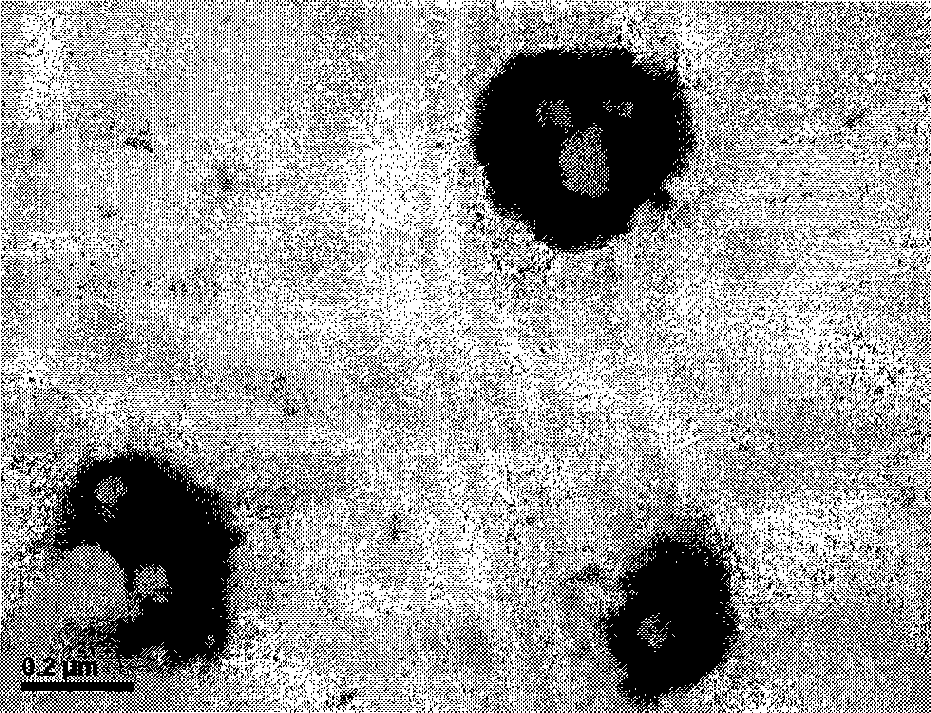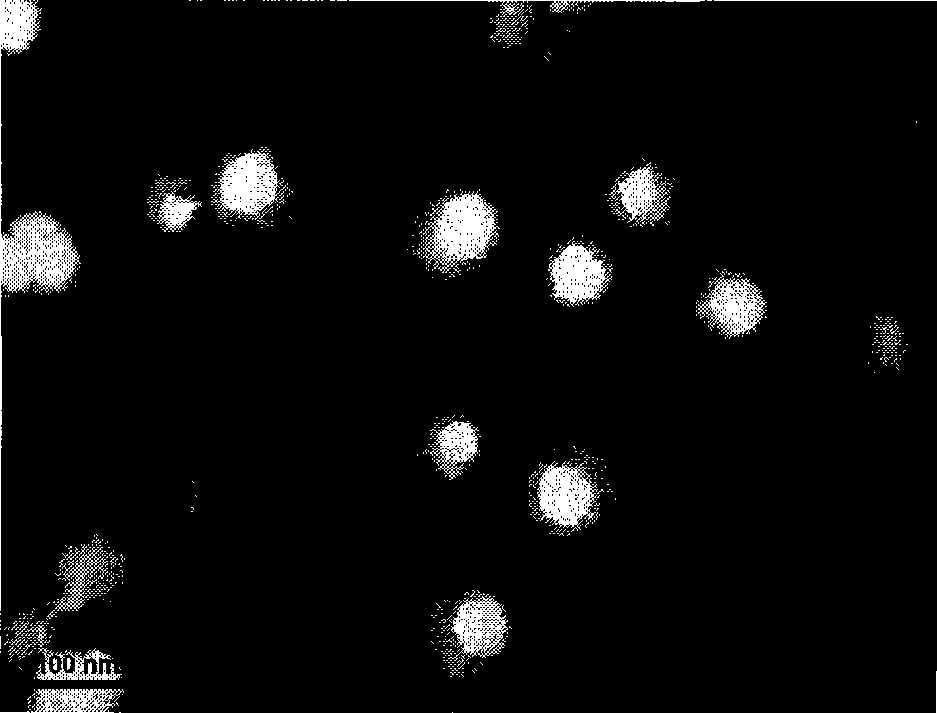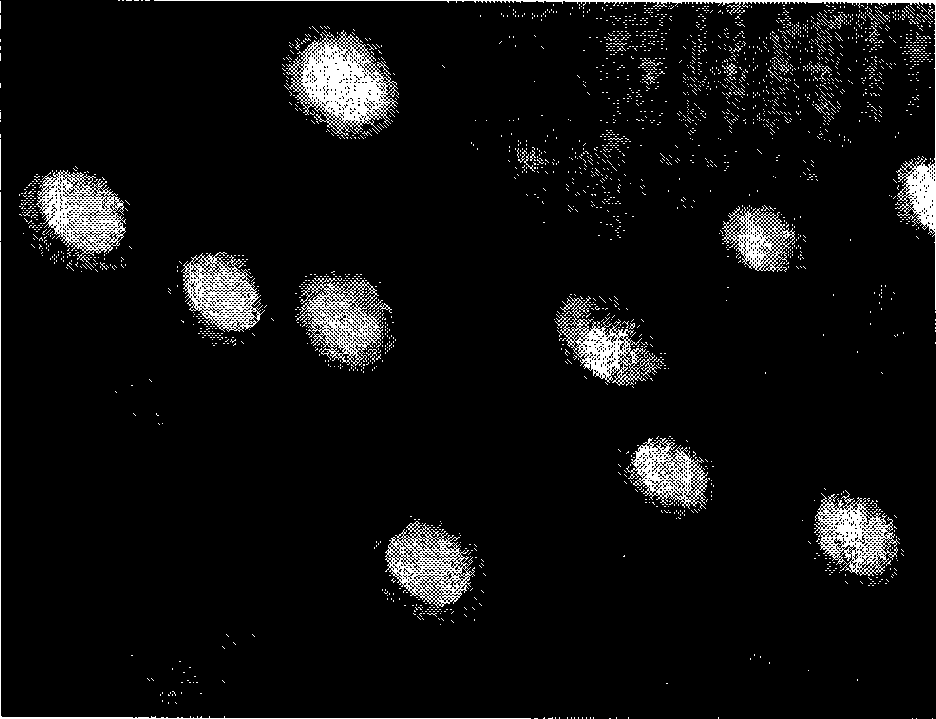Core-shell type paint dyeing and printing adhesive agent emulsion and preparation method thereof
A core-shell type and adhesive technology, applied in dyeing, textiles and papermaking, etc., can solve problems such as environmental pollution, increase in raw material costs, web blocking, sticking rollers, etc., to improve printing fastness and reduce web blocking Effect
- Summary
- Abstract
- Description
- Claims
- Application Information
AI Technical Summary
Problems solved by technology
Method used
Image
Examples
preparation example Construction
[0032] 2. About the preparation method of the adhesive.
[0033] The preparation method of the core-shell type emulsion paint printing and dyeing adhesive modified by hydroxy-terminated acrylate is as follows:
[0034] Add 1 / 8 to 1 / 3 of the soft monomer, hard monomer, initiator, all surfactants and deionized water in the above-mentioned components into the reactor, and stir and pre-emulsify at 20°C to 50°C for 15min to 30min , raise the temperature to 75°C-90°C; keep warm for 1-3 hours after initiating polymerization, then cool and lower the temperature naturally; after cooling for 2-8 hours, raise the temperature to 50°C-70°C, add the remaining soft monomer and hard monomer dropwise , initiators, functional monomers and deionized water, keep warm at 75°C-90°C for 1.5-4 hours after the dropwise addition, and then cool to room temperature; Compound emulsion.
[0035] Various performances of the product of the present invention prepared by the above method can be detected by t...
Embodiment 1
[0045] Adhesive emulsion polymerization formula (percentage of each component of the reaction system in the total mass of the monomer):
[0046] Hydroxyethyl Acrylate 20
[0047] Ethyl acrylate and 2-ethylhexyl acrylate 60
[0048] Acrylic and Methacrylic 10
[0049] Methyl methacrylate 5
[0050] Styrene 5
[0051] Ammonium persulfate 0.5
[0052] Sodium lauryl sulfate and octylphenol polyglycol ether 5
[0053] Appropriate amount of deionized water
[0054] Synthesis:
[0055] Add 1 / 8 to 1 / 3 of the soft monomer, hard monomer, initiator, all emulsifiers and deionized water in the above reactant formula to the reactor, and stir and pre-emulsify at 20°C to 50°C for 15min to 30min , heat up to 75°C to 90°C; keep warm for 1 to 3 hours after initiating polymerization, then cool naturally and lower the temperature. Cool for 2 to 8 hours, heat up to 50°C to 70°C, add the remaining soft monomer, hard monomer, initiator and crosslinking monomer dropwise, and add the remaining ...
Embodiment 2
[0057] Adhesive emulsion polymerization formula (percentage of each component of the reaction system in the total mass of the monomer):
[0058] Hydroxybutyl acrylate 1
[0059] Butyl acrylate 80
[0060] Methacrylic acid 10
[0061] Methyl methacrylate and ethyl methacrylate 5
[0062] Acrylonitrile 2
[0063] Acrylamide 2
[0064] Potassium persulfate 0.5
[0065] Sodium dodecylbenzenesulfonate and octylphenol polyglycol ether 2
[0066] Appropriate amount of deionized water
[0067] Synthesis:
[0068] Add 1 / 8 to 1 / 3 of the soft monomer, hard monomer, initiator, all emulsifiers and deionized water in the above reactant formula into the reactor, and stir and pre-emulsify at 20°C to 50°C for 15min to 30min , heat up to 75°C to 90°C; keep warm for 1 to 3 hours after initiating polymerization, then cool naturally and lower the temperature. Cool for 2 to 8 hours, heat up to 50°C to 70°C, add the remaining soft monomer, hard monomer, initiator and crosslinking monomer dr...
PUM
 Login to View More
Login to View More Abstract
Description
Claims
Application Information
 Login to View More
Login to View More - R&D
- Intellectual Property
- Life Sciences
- Materials
- Tech Scout
- Unparalleled Data Quality
- Higher Quality Content
- 60% Fewer Hallucinations
Browse by: Latest US Patents, China's latest patents, Technical Efficacy Thesaurus, Application Domain, Technology Topic, Popular Technical Reports.
© 2025 PatSnap. All rights reserved.Legal|Privacy policy|Modern Slavery Act Transparency Statement|Sitemap|About US| Contact US: help@patsnap.com



